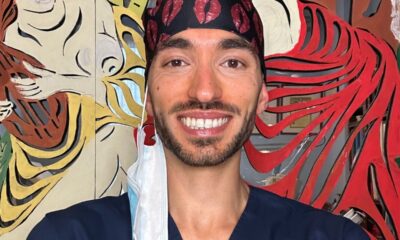Medical doctors and Surgeons
Men’s diastase: the patient journey
Diastase is a condition that also touches men. Doctor Stefano Campa, esthetic and
reconstructive plastic surgeon specialist, explains how masculin diastase maschile can be a
widespread disease among bariatric patients. The most common symptoms are intestinal and bladder alteration, in addition to various forms of dyspepsia, affecting the quality of life of thos who suffer from it.
Masculine diastase: people affected

reconstructive plastic surgeon specialist
Masculine diastase occurs when the abdomen separation is wider than 2,5 cm. «Diastase can
be mild, moderate or severe grade – explains Dr Campa – in this last case besides aesthetical, the
damage can also be functional».
Those who live in a condition of obesity have a higher risk of suffering diastase, due to the
increase of intra-abdominal pressure caused by the fat gain.
However, masculine diastase can affect those who practice physical activity without foresight or
who has congenital laxity. «In this case – continues the surgeon – there can be congenital defects
and there is a minor resistance of the abdominal wall».
The surgery
The diastase correction surgery consists in: «The reconstruction of the muscular wall integrity»
explains Dr Campa. During an abdominoplasty it is possible to correct a diastase at the same
time. It begins by detaching the skin flap to do a plastic of the abdominal wall. «I usually do it in a double layer – continues the surgeon – a deeper one and a superficial layer, then I place a
continuous suture e si usa una sutura continua in order to have a greater tightness».
In the event of an operation of a patient who suffers from obesity, it is suggested to intervene to bariatric surgery first, on order to normalize body weight. «After six months to a year it will then be possible to begin with the surgical procedures of body shaping» explains Dr Campa.
The rehabilitation
«During the post-operating phase, it is important to be very careful – continues the surgeon –
because anything that increases intra abdominal pressure puts a strain on the rectus muscles». In order to avoid an application collapse that could bring a recidiva, it is important to always wear a sheath for one or two months after the surgery.
«In my opinion, sheaths are crucial – continues Dr Campa – because they reduce deep tissue
edema». They also provide resistance to the increase of endo abdominal pressure avoiding
rectus muscles to collapse.
It is indeed possible that a recidivism occurs, with a recurrence of masculine diastase, but this
option must be rejected. «During the first days after surgery – concludes the surgeon – it is
therefore very important to avoid making efforts otherwise the sutures might collapse».































